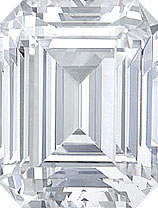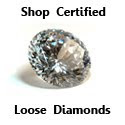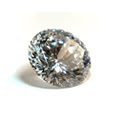 And so we reach Trilliant (or Triangular Brilliant) Cut Diamonds. Providing that Trillian Cut stones are Cut correctly (particularly in relation to their depth), they exhibit fantastically sharp fire and brilliance - truly stunning.
And so we reach Trilliant (or Triangular Brilliant) Cut Diamonds. Providing that Trillian Cut stones are Cut correctly (particularly in relation to their depth), they exhibit fantastically sharp fire and brilliance - truly stunning.Here in the US the ideal pavilion depth is considered to fall in between 1/3 & 2/3, although some of the foreign Trilliants often display 50/50 proportions. To secure the ideally shaped Trilliant, try to find one that has a length-to-width ratio of 1:1.
























